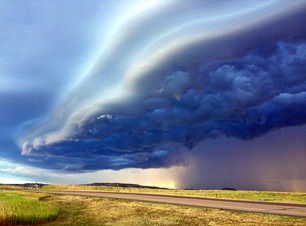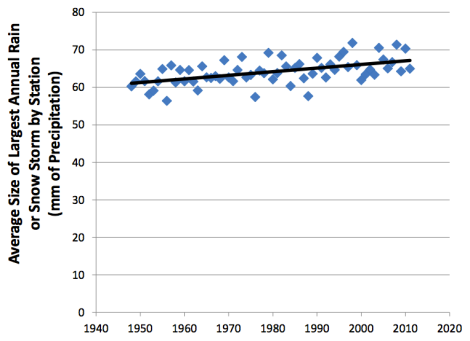One of the problems with the term “global warming” is that people don’t really have any idea what it means. They understand that hot days might be related; it says so right there on the box. But when it comes to some of the other possible impacts of climate change — severe weather, hurricanes, etc. — people have a harder time drawing a straight line.
Today, Environment America is trying to make that line obvious. According to a new analysis by the group, extreme downpours (rain or snow) now occur 30 percent more often than they did in 1948.
In other words, large rain or snowstorms that happened once every 12 months, on average, in the middle of the 20th century now happen every nine months. Moreover, the largest annual storms now produce 10 percent more precipitation, on average.
As the map above shows, the impacts have been felt far more in the Northeast than the West. Environment America’s research suggests that 43 of the 50 states had “significant increases” in the frequency of extreme storms.
What’s important is the role climate change plays in the increase. How, after all, can a warmer global climate increase snowstorms?
Warmer air can hold more water once it has evaporated. The water-holding capacity of the air increases roughly exponentially with temperature. Using satellites and ground-based measurements, scientists have found that the water content of the atmosphere is now increasing at a rate of about 1.3 percent per decade, consistent with expected changes given the temperature increases that have occurred. …
This excess moisture provides more fuel for intense downpours—and more intense snowstorms at times and in places where it is cold enough to snow.
Environment America, in a burst of optimism, also suggests policy changes that could ameliorate the situation; to wit, addressing climate change. I wouldn’t hold my breath, gang.
At the very least, the organization has provided a quick and easy response to those unable to see how climate change leads to bigger rain- and snowstorms — and, just as importantly, the evidence that it’s already happeneing.





